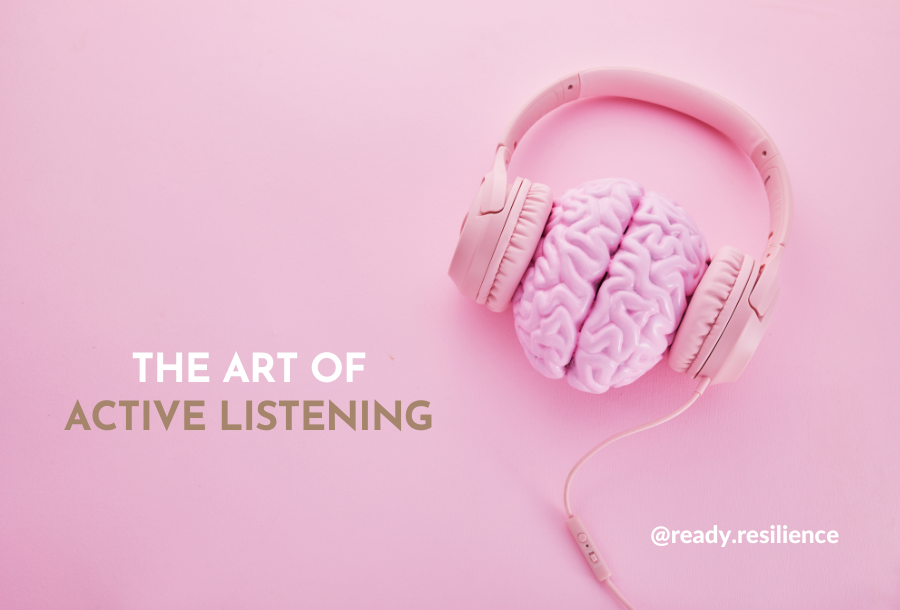
GUEST POST BY Wendy Jenkins OAM, READY RESILIENCE
Ready Resilience helps organisations thrive during times of change and challenge, using practical neuroscience-based resilience tools that have been proven to offer in-the-moment solutions and long-lasting results.
Unleashing the Power of Neuroleadership: The Art of Active Listening
In the fast-paced and ever-evolving landscape of leadership, adopting a neuroleadership approach can be a game-changer.
Neuroleadership integrates neuroscience principles into leadership strategies, focusing on understanding and leveraging the intricacies of the human brain to enhance leadership effectiveness.
One invaluable neuroleader tool that stands out is the art of active listening.
You may have heard about it; however do you know the science behind why it works?
Active listening goes beyond merely hearing words; it involves a deep and intentional engagement with the person who is speaking.
Neuroleaders recognise that effective communication is a two-way street, and by honing their active listening skills, they build stronger connections with their teams and their colleagues.
Neuroscience emphasises the significance of the brain’s social circuitry, which is activated during social interactions.
When leaders actively listen, they trigger neural pathways associated with empathy and understanding.
This approach fosters a positive and inclusive work environment, where team members feel heard and valued.
One other key aspect of active listening is the use of non-verbal communication.
Neuroleaders pay attention to both verbal and non-verbal cues, such as body language and facial expressions.
This allows leaders to grasp the underlying emotions and sentiments of their team members, facilitating a more nuanced and empathetic response.
Situated within the insular cortex, the anterior insula is also associated with emotional processing and self-awareness.
It becomes active during emotional experiences and plays a role in recognising and understanding the emotional content of the speaker’s message during active listening.
Moreover, active listening contributes to effective problem-solving.
By fully understanding the concerns and perspectives of team members, neuroleaders can make informed decisions that resonate with the collective goals of the team.
This not only elevates team morale but can also amplify overall team performance.
In this state, neuroleaders activate brain regions associated with critical thinking, including the dorsolateral prefrontal cortex.
Implementing active listening does however require consistent practice but is worth developing.
By embracing active listening, neuroleaders can better empower their teams, cultivate trust, and foster a workplace where innovation and collaboration thrive.
ABOUT THE AUTHOR
Wendy Jenkins is the founder of Ready Resilience, Co-Founder of the Lungitude Foundation, Speaker and Lung Transplant Survivor. Ready Resilience helps organisations thrive during times of change and challenge, using practical neuroscience-based resilience tools that have been proven to offer in-the-moment solutions and long-lasting results. Having been told she had two years to live over sixteen years ago, Wendy is driven to help people transform their perspective on challenges in life. To find out more visit www.readyresilience.com.



